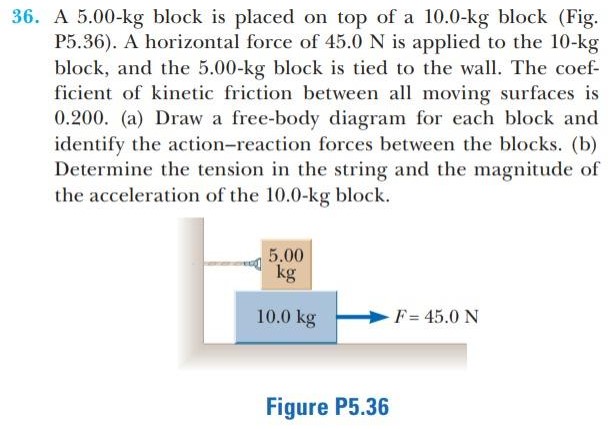A 5.00−kg block is placed on top of a 10.0−kg block (Fig. P5.36). A horizontal force of 45.0 N is applied to the 10−kg block, and the 5.00−kg block is tied to the wall. The coefficient of kinetic friction between all moving surfaces is 0.200. (a) Draw a free-body diagram for each block and identify the action-reaction forces between the blocks. (b) Determine the tension in the string and the magnitude of the acceleration of the 10.0−kg block. Figure P5.36
